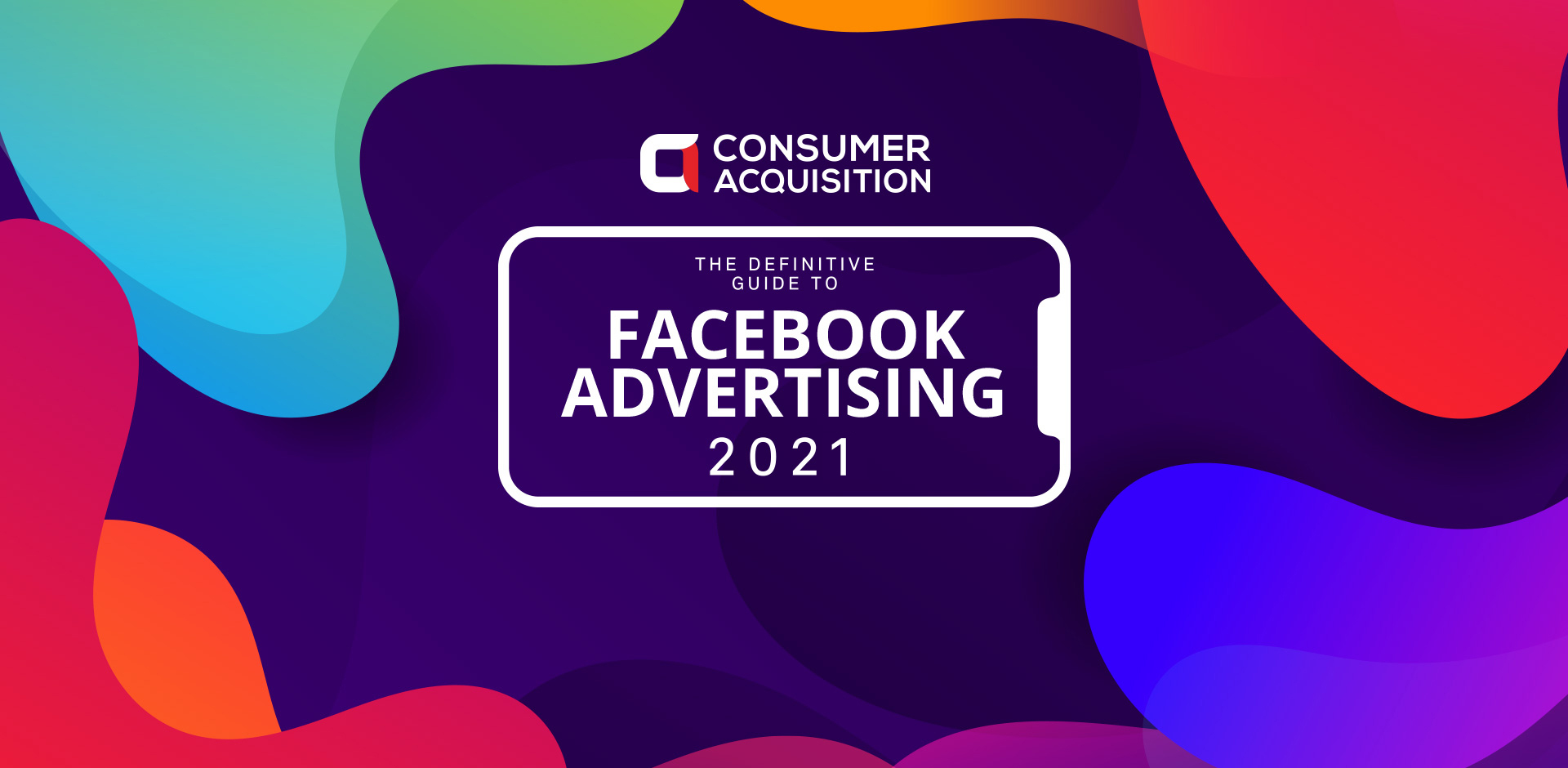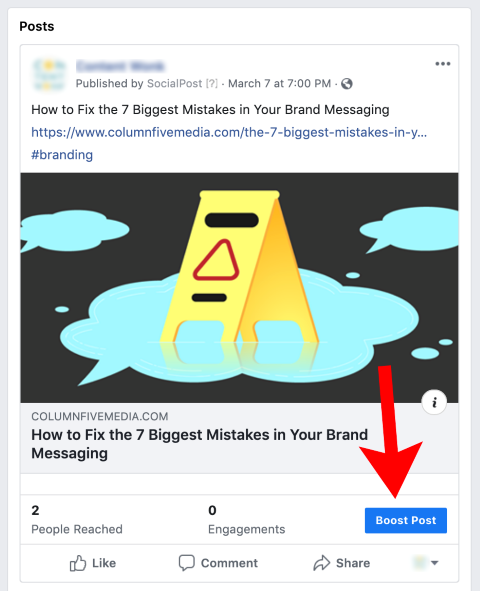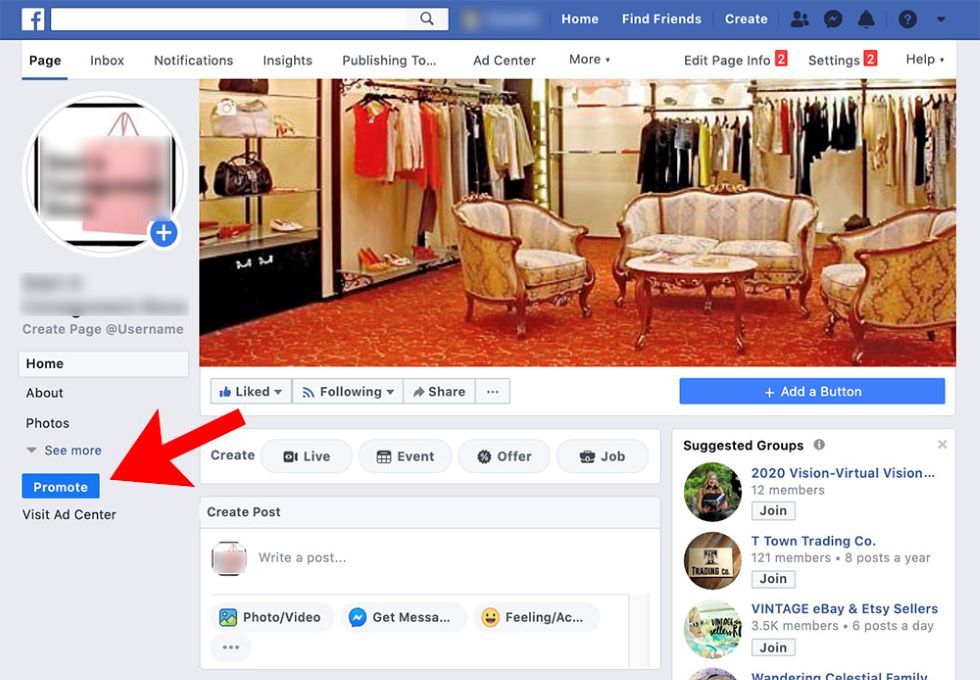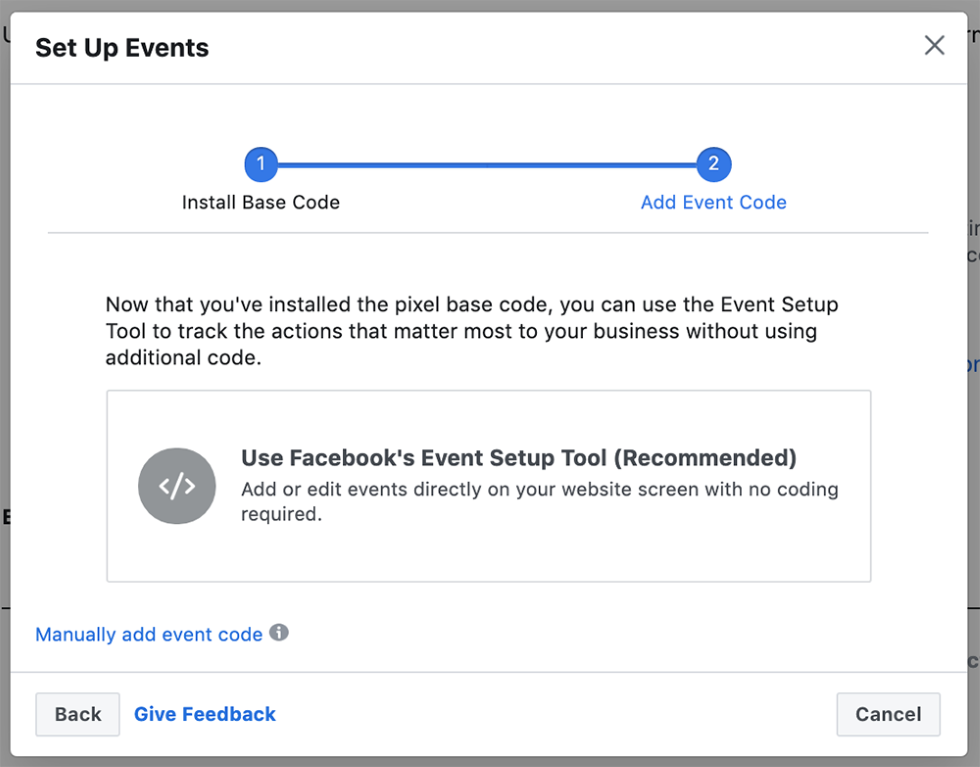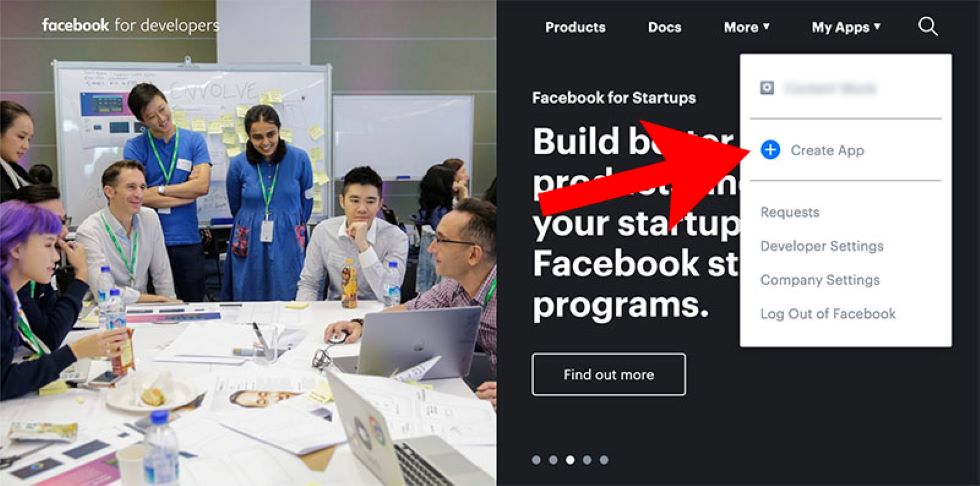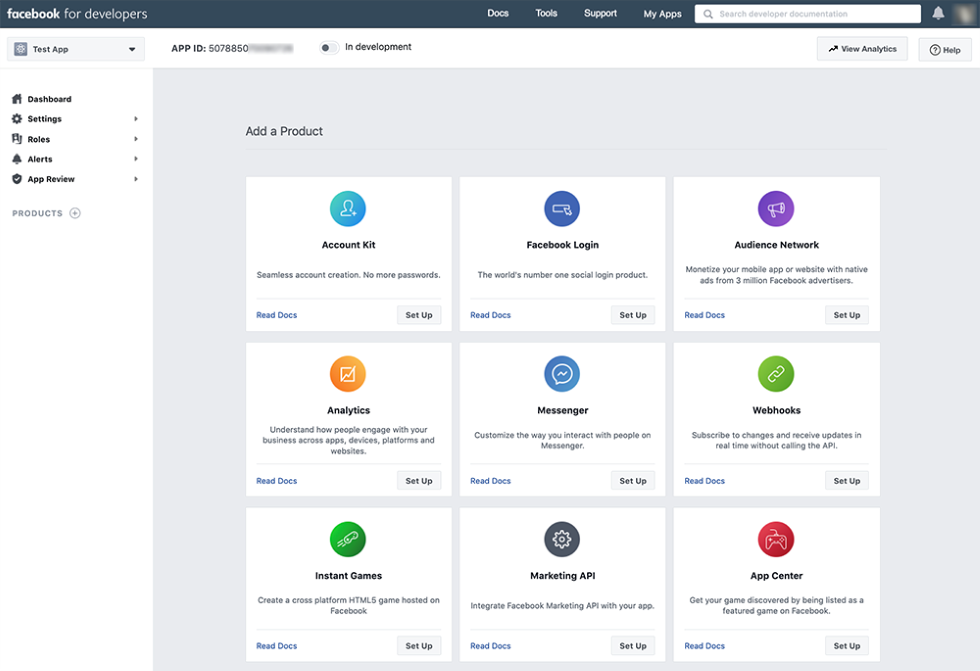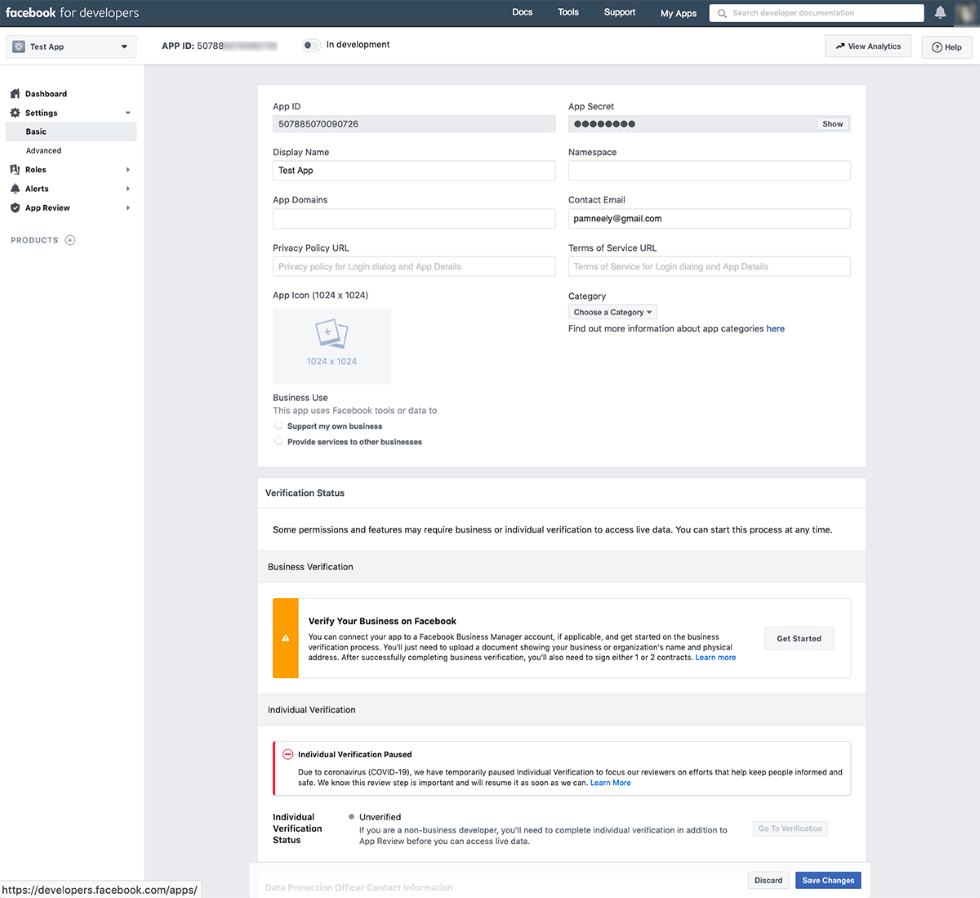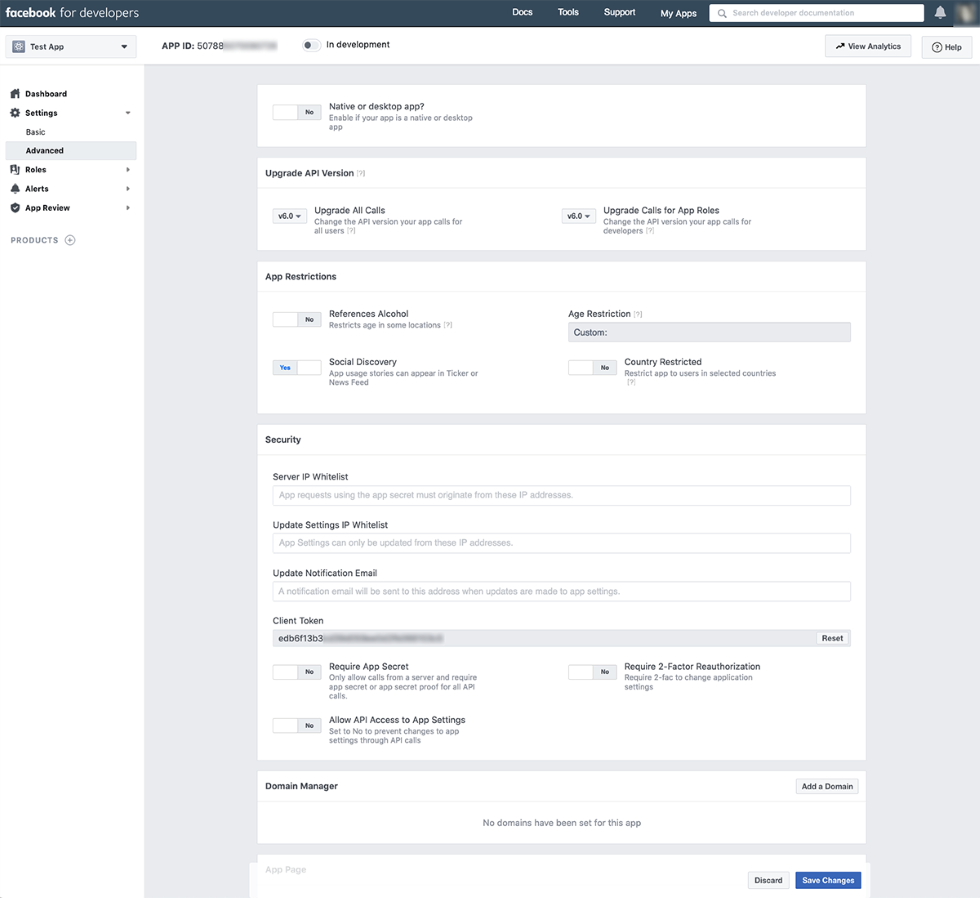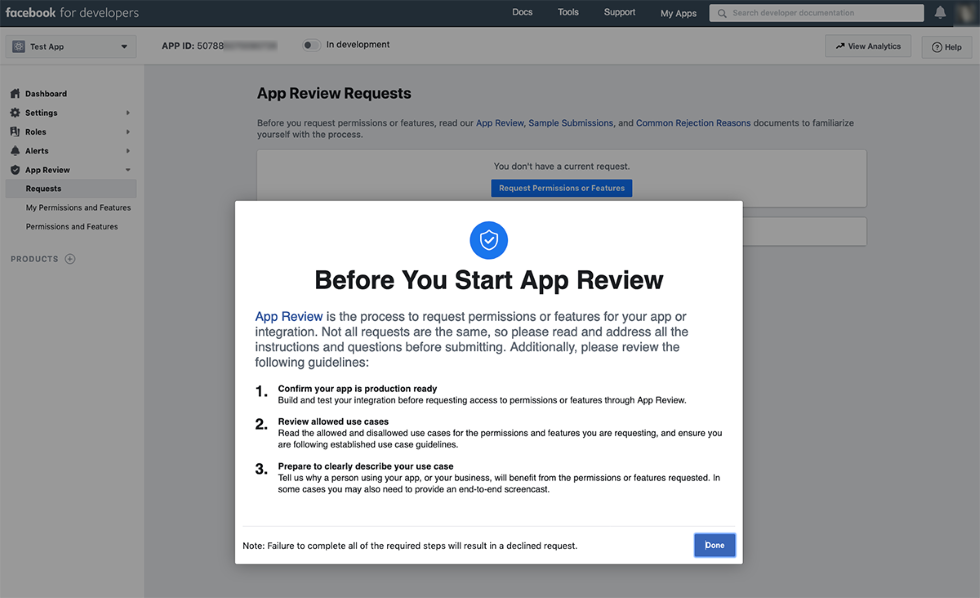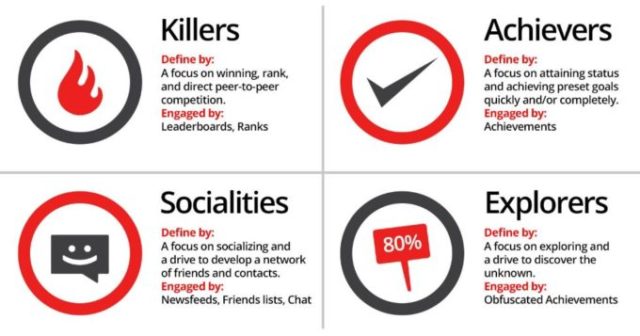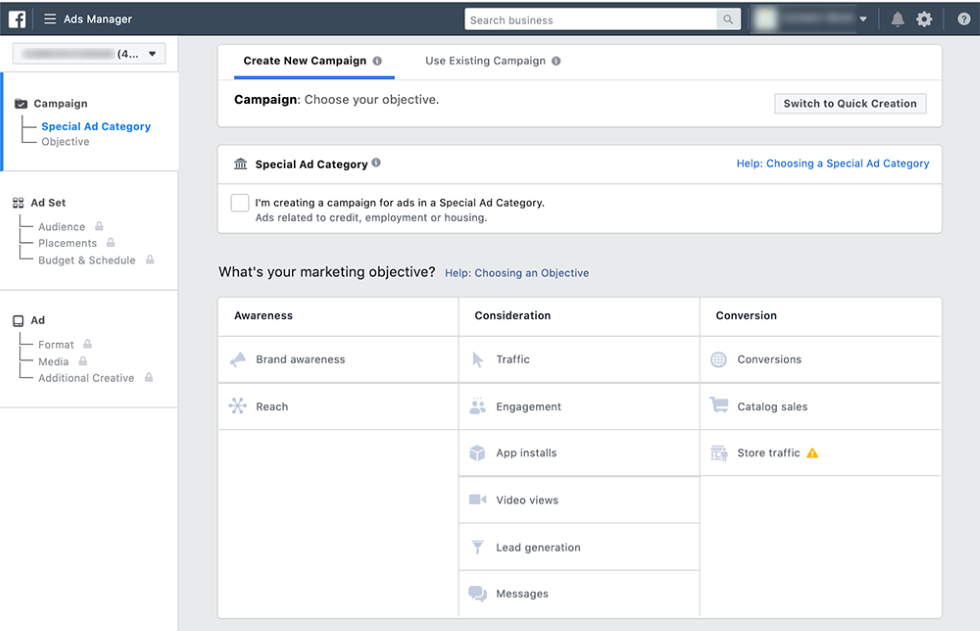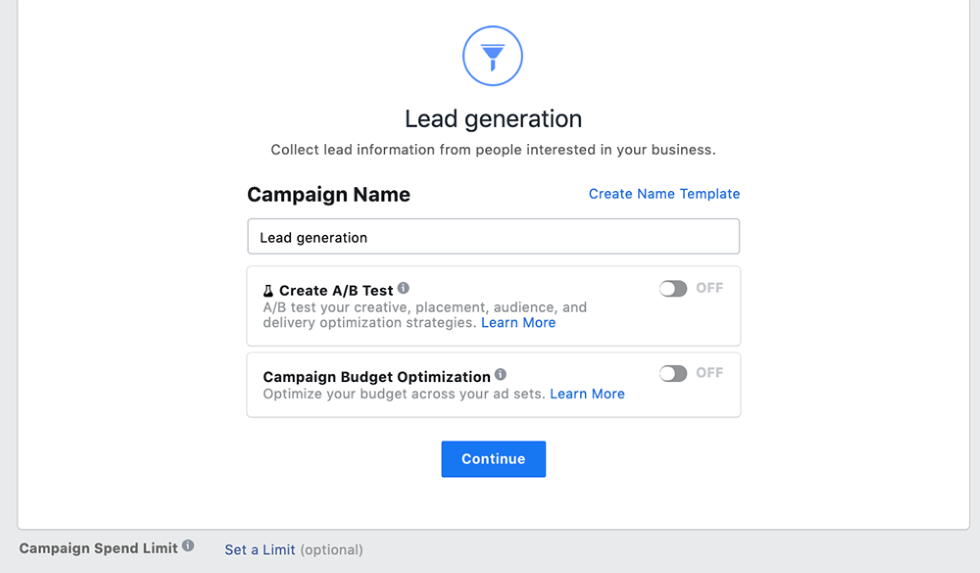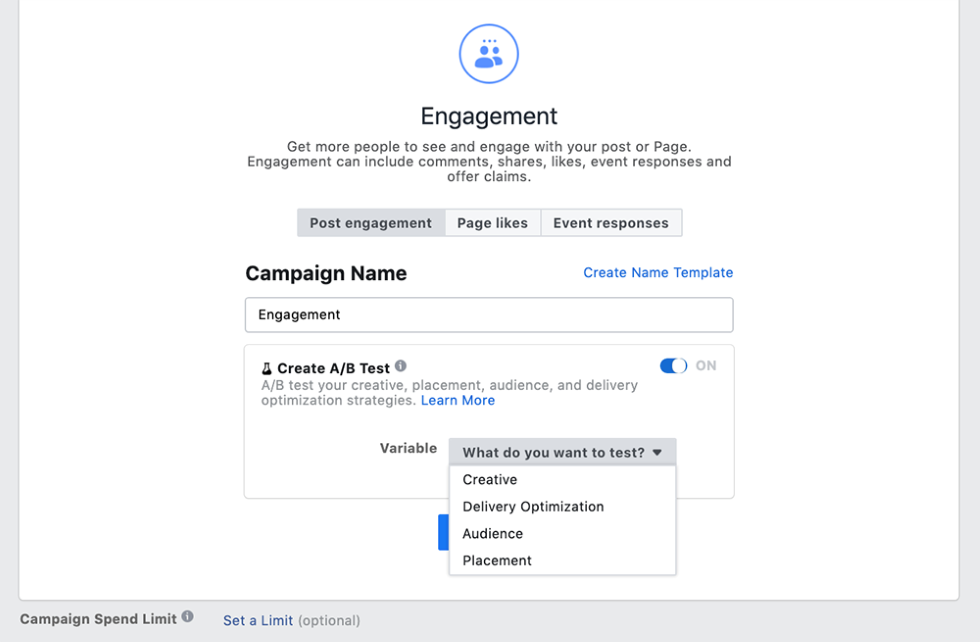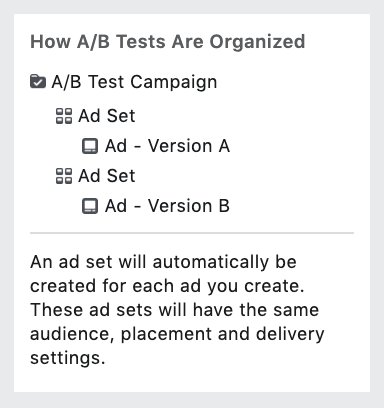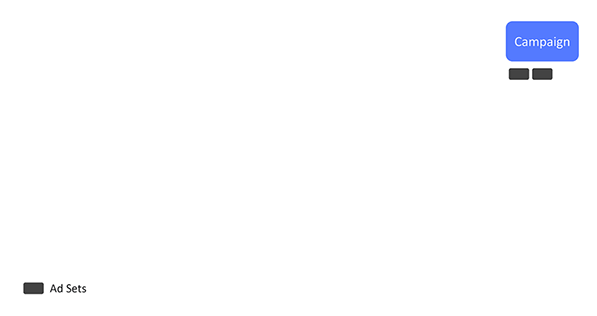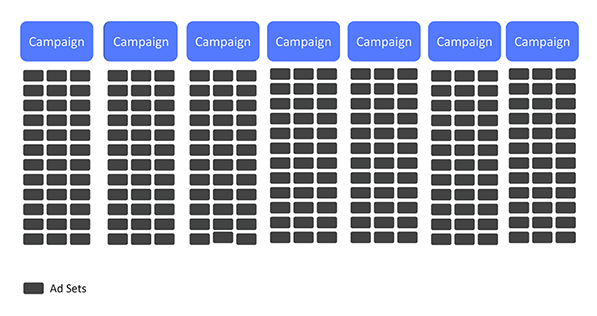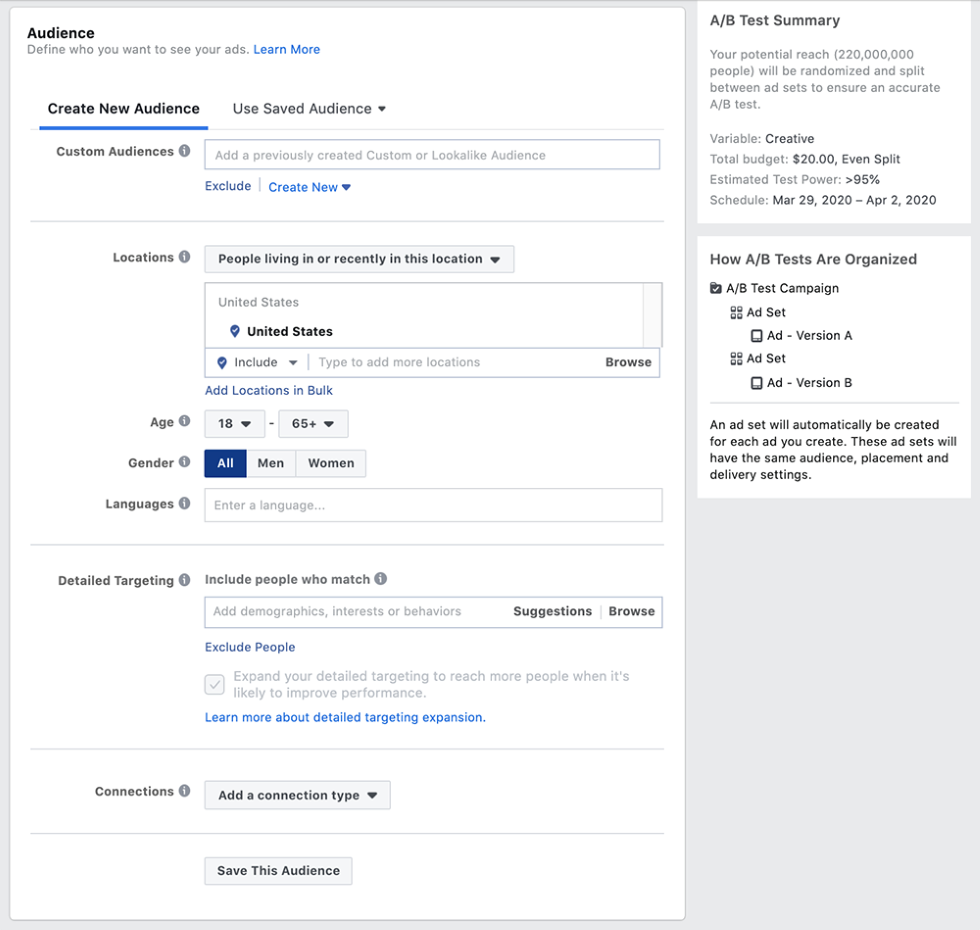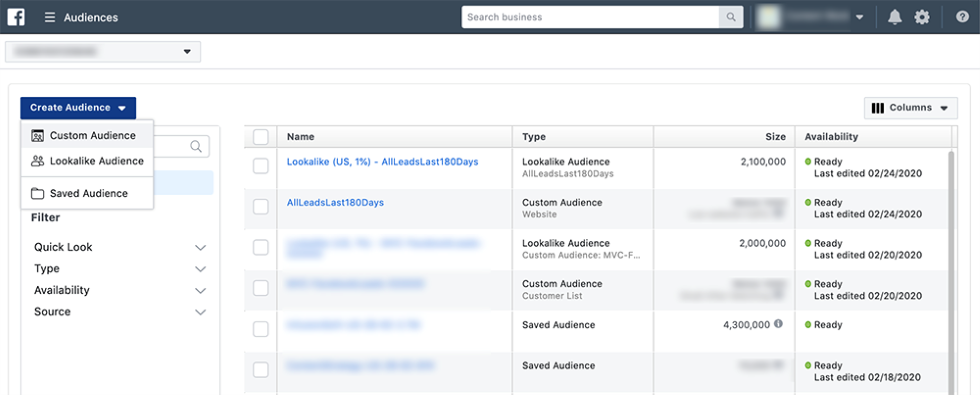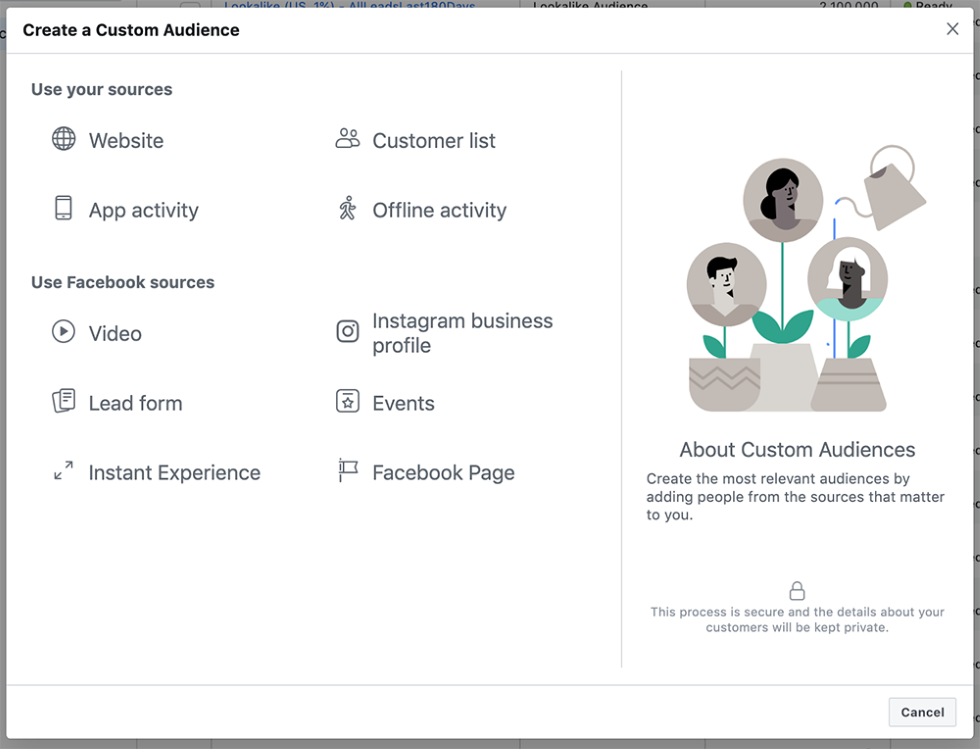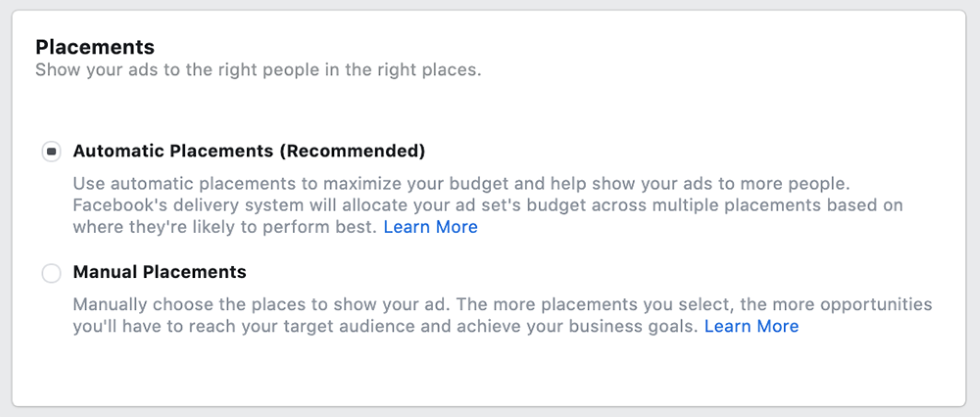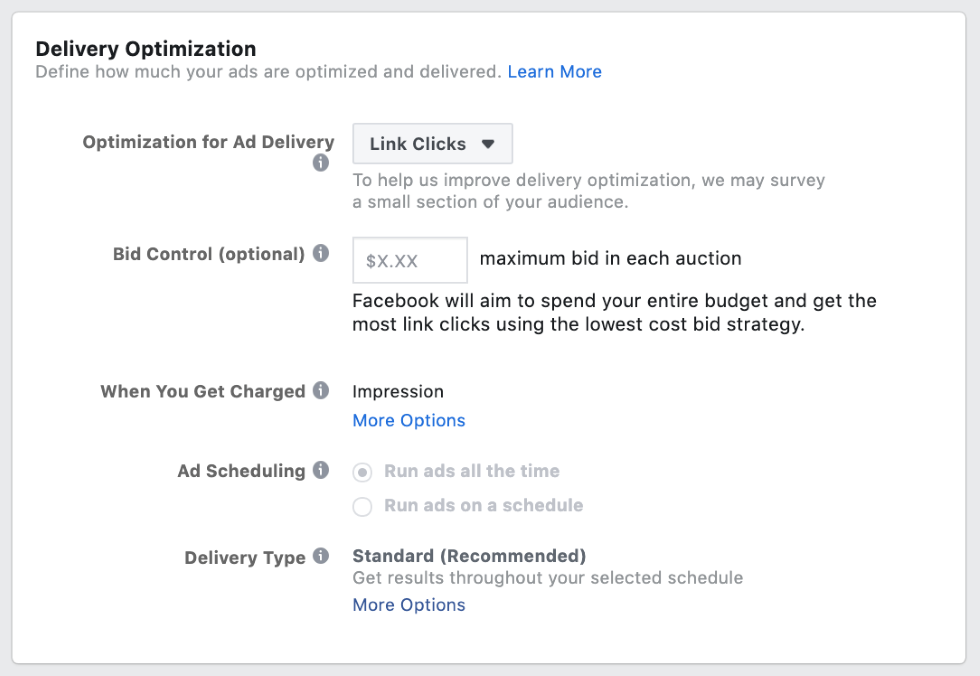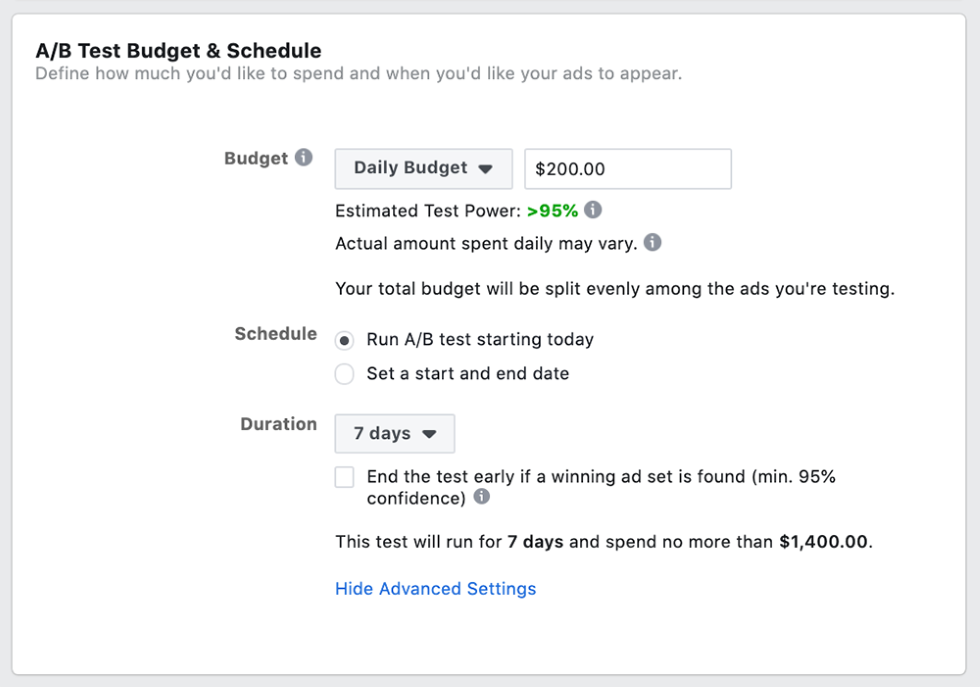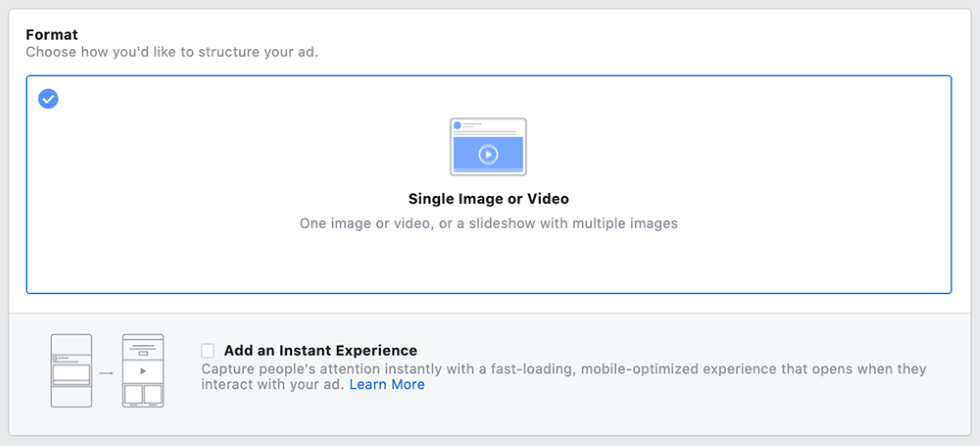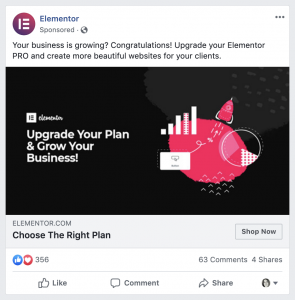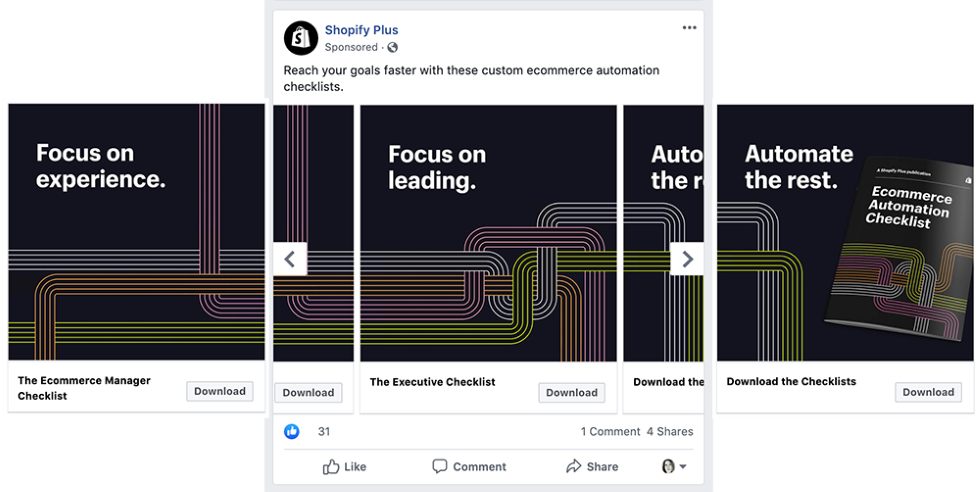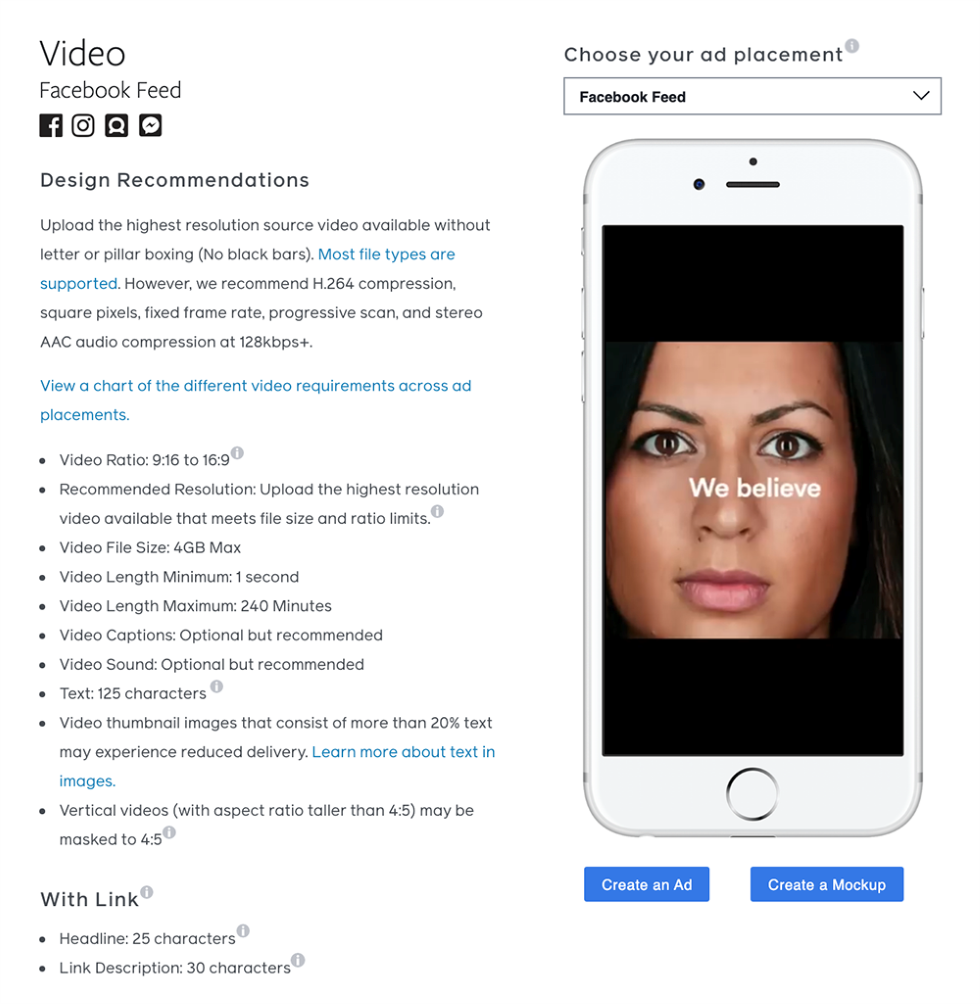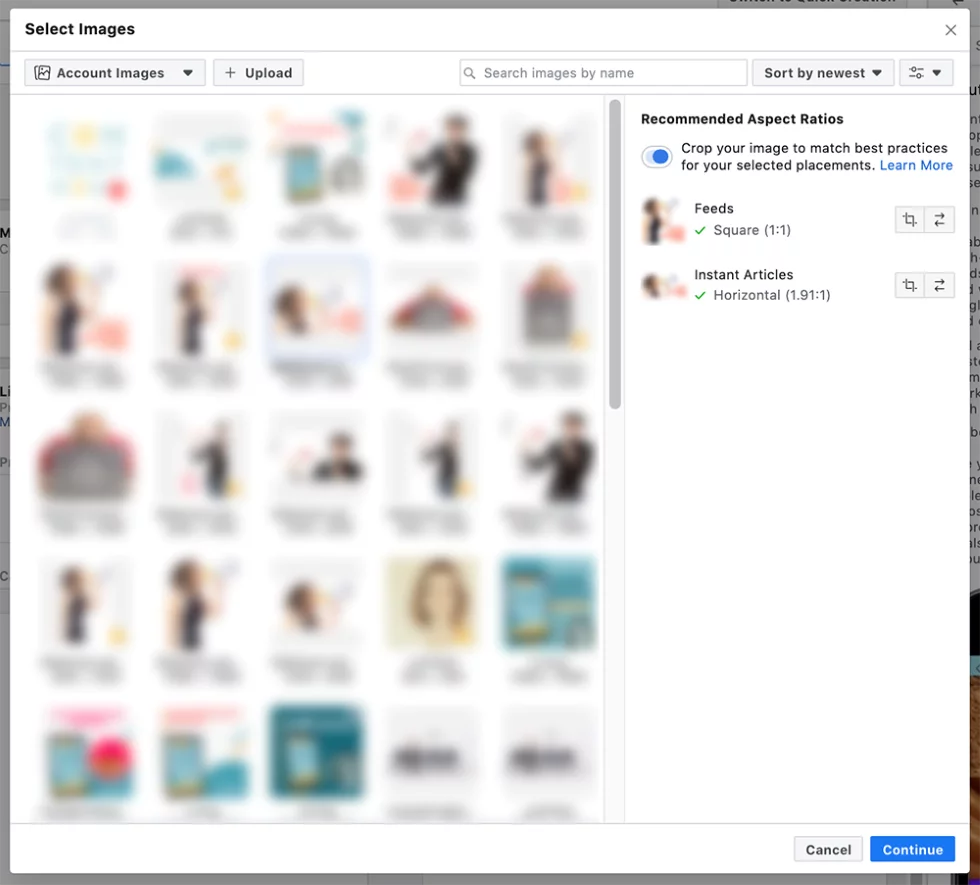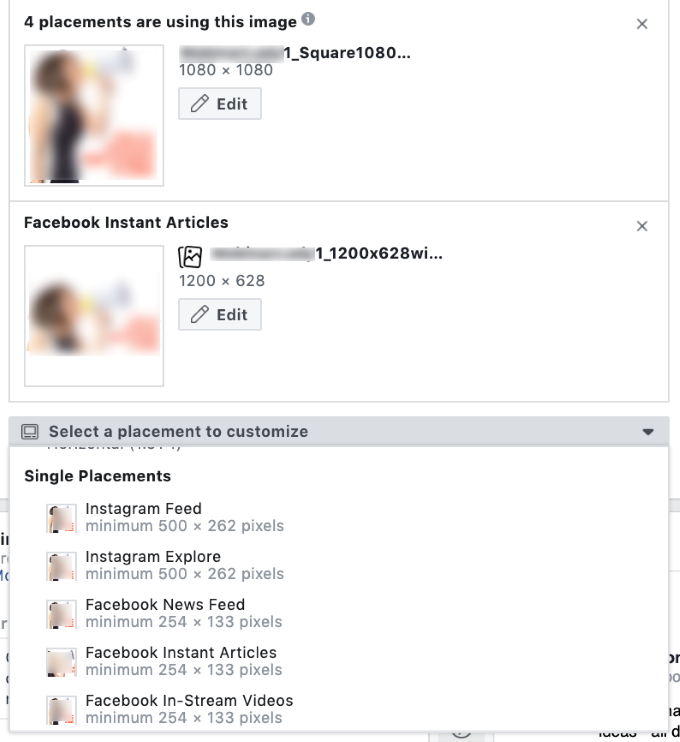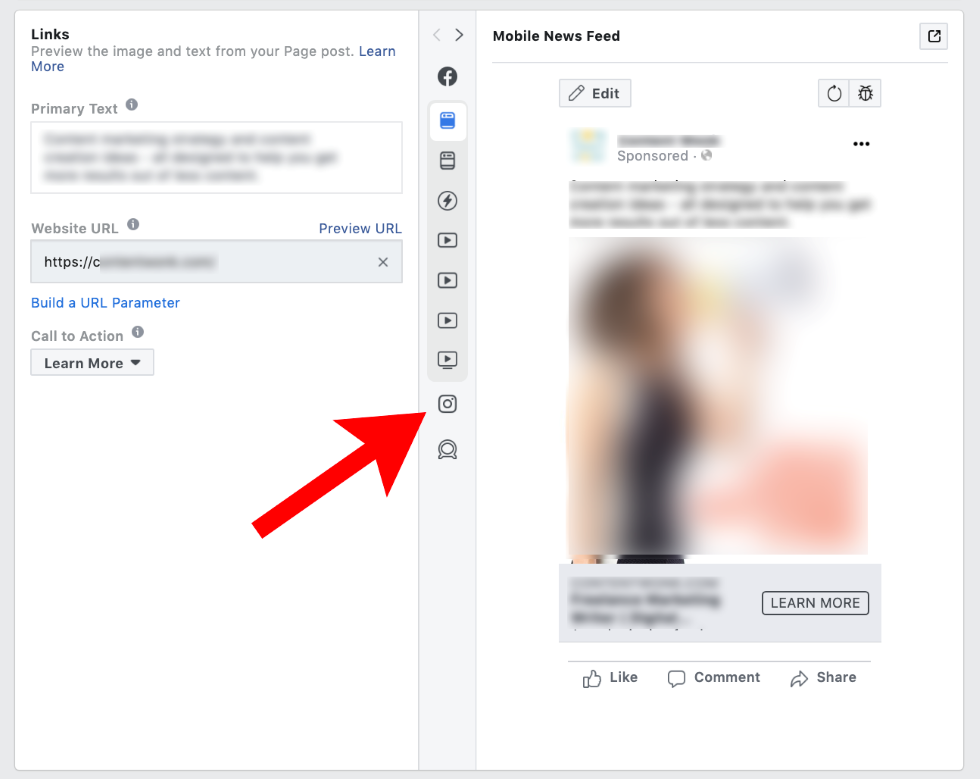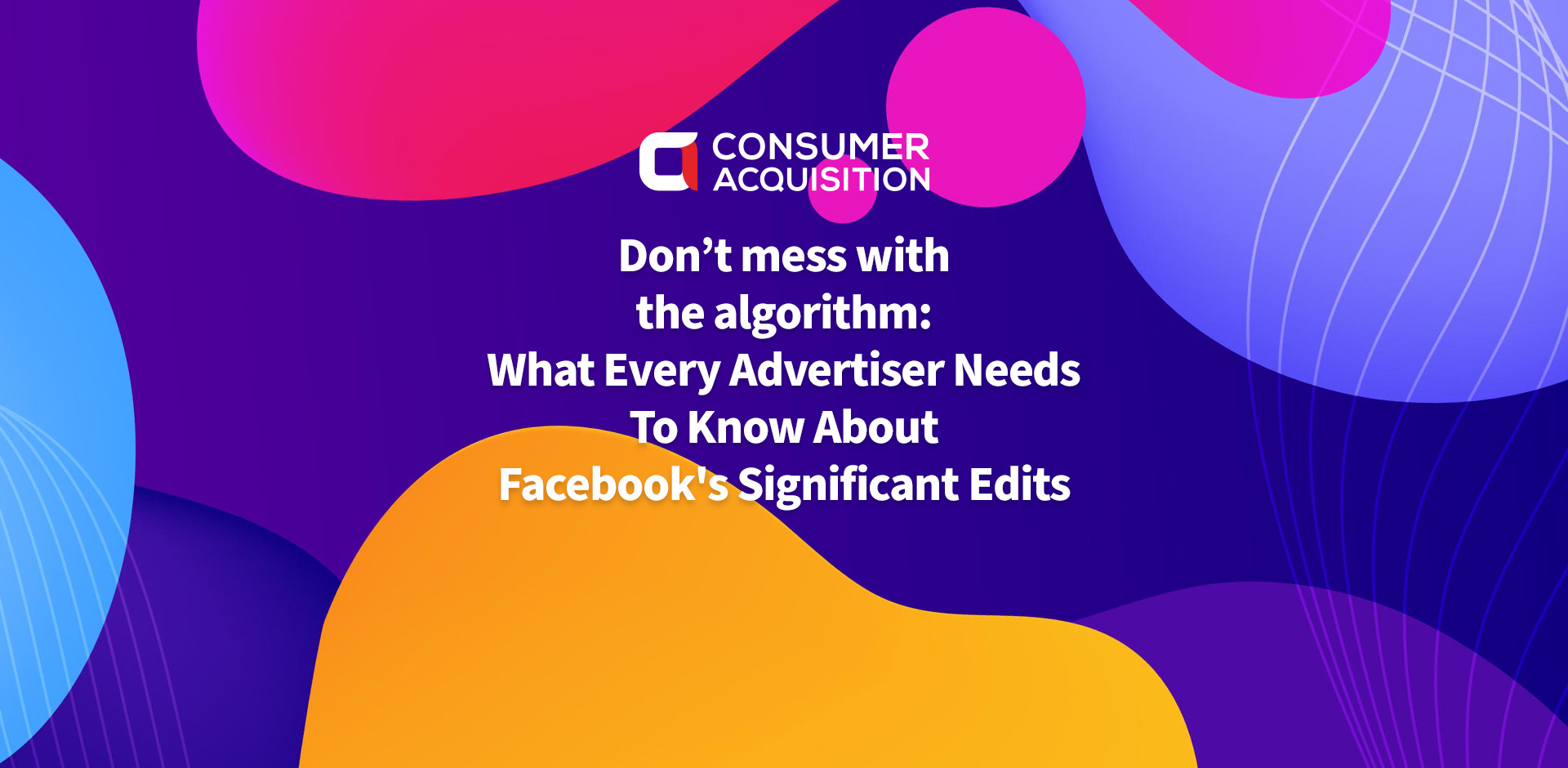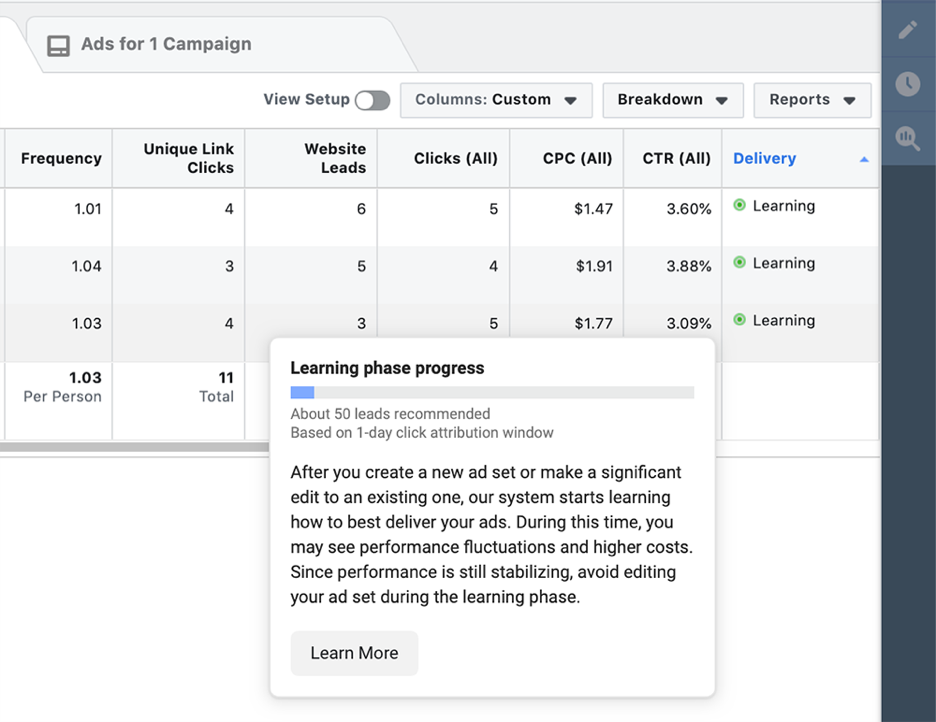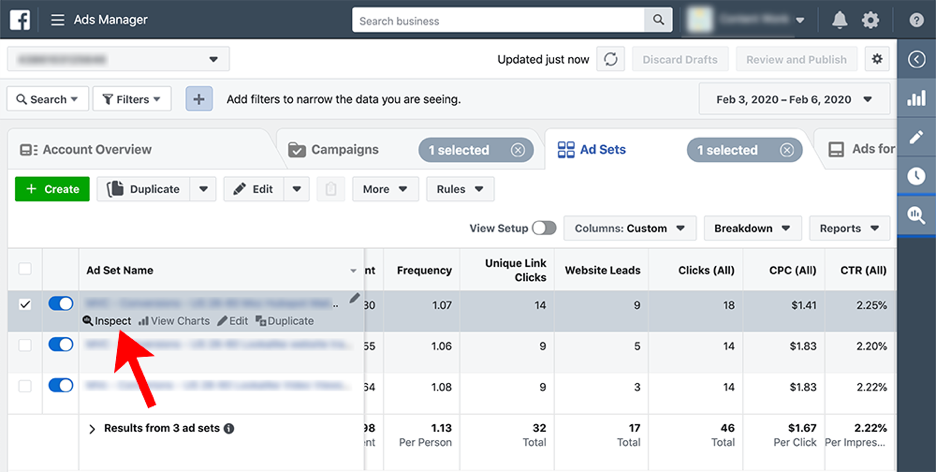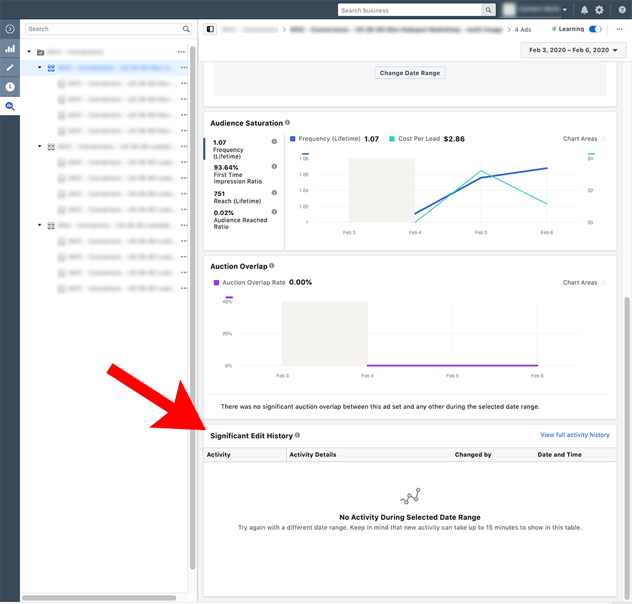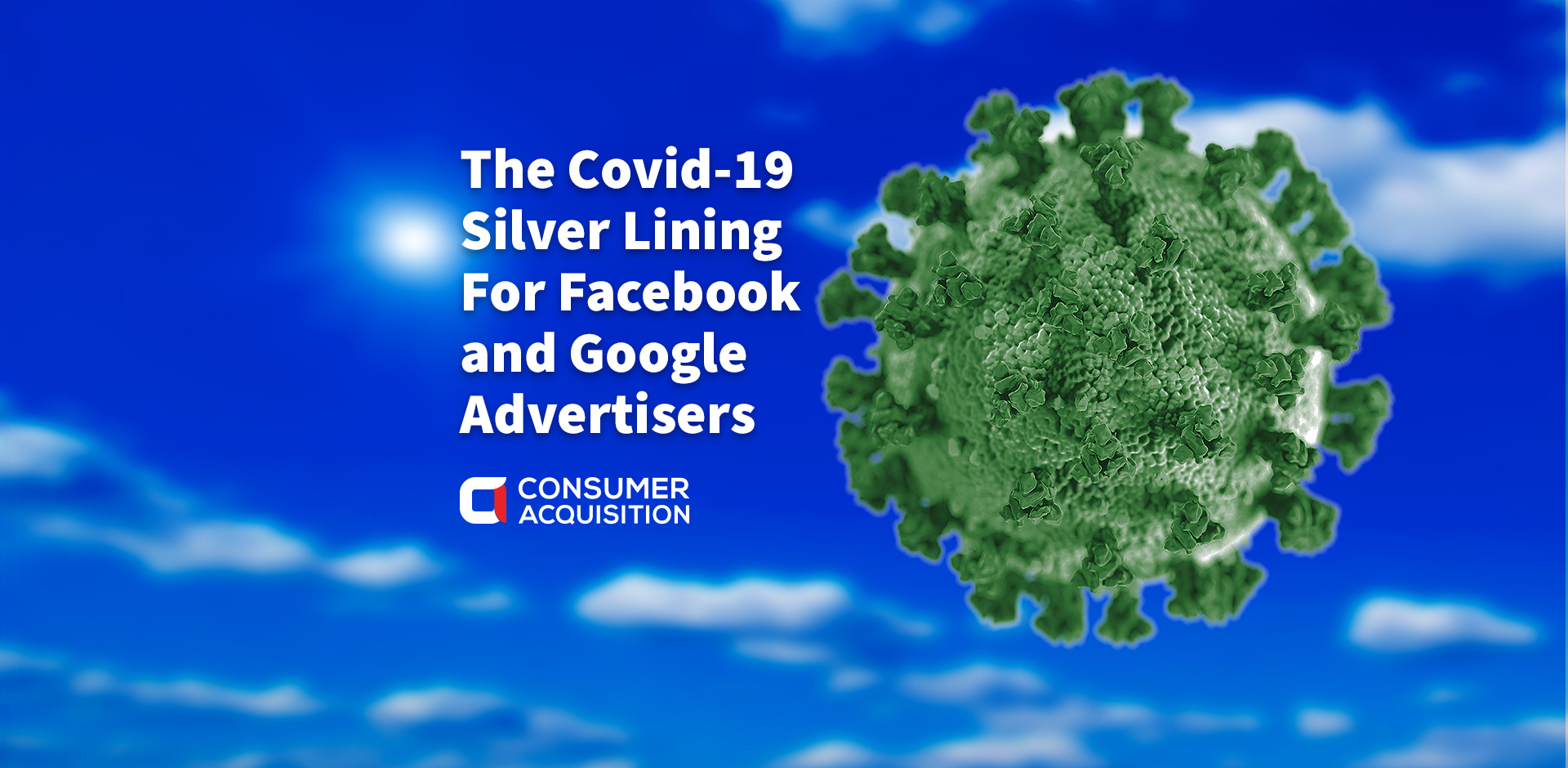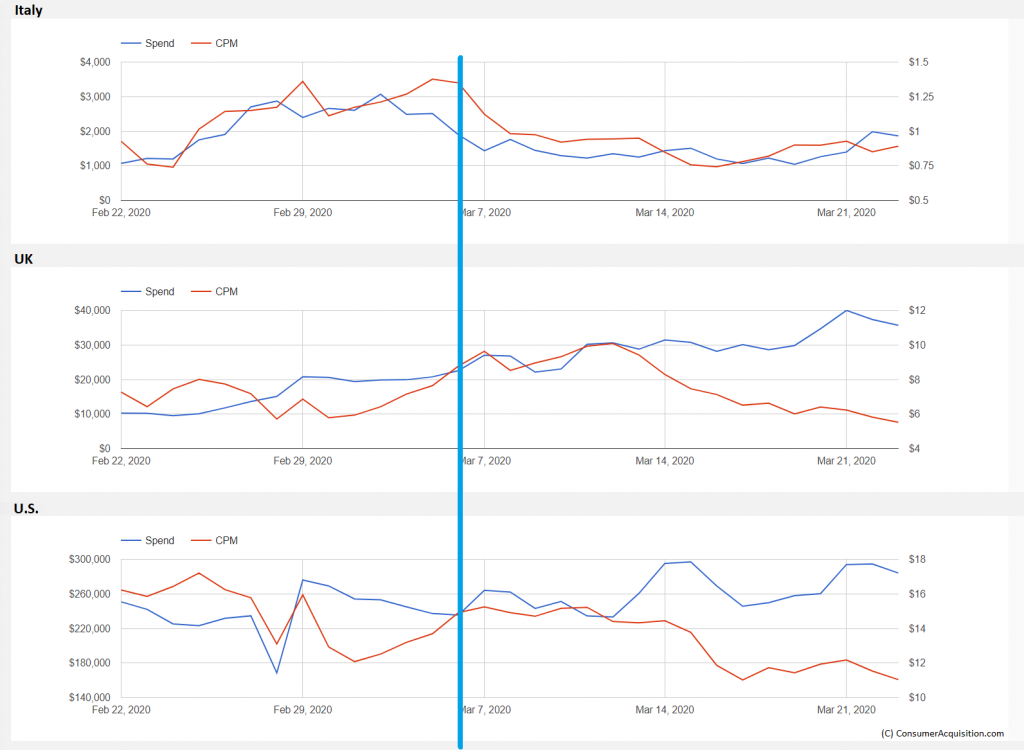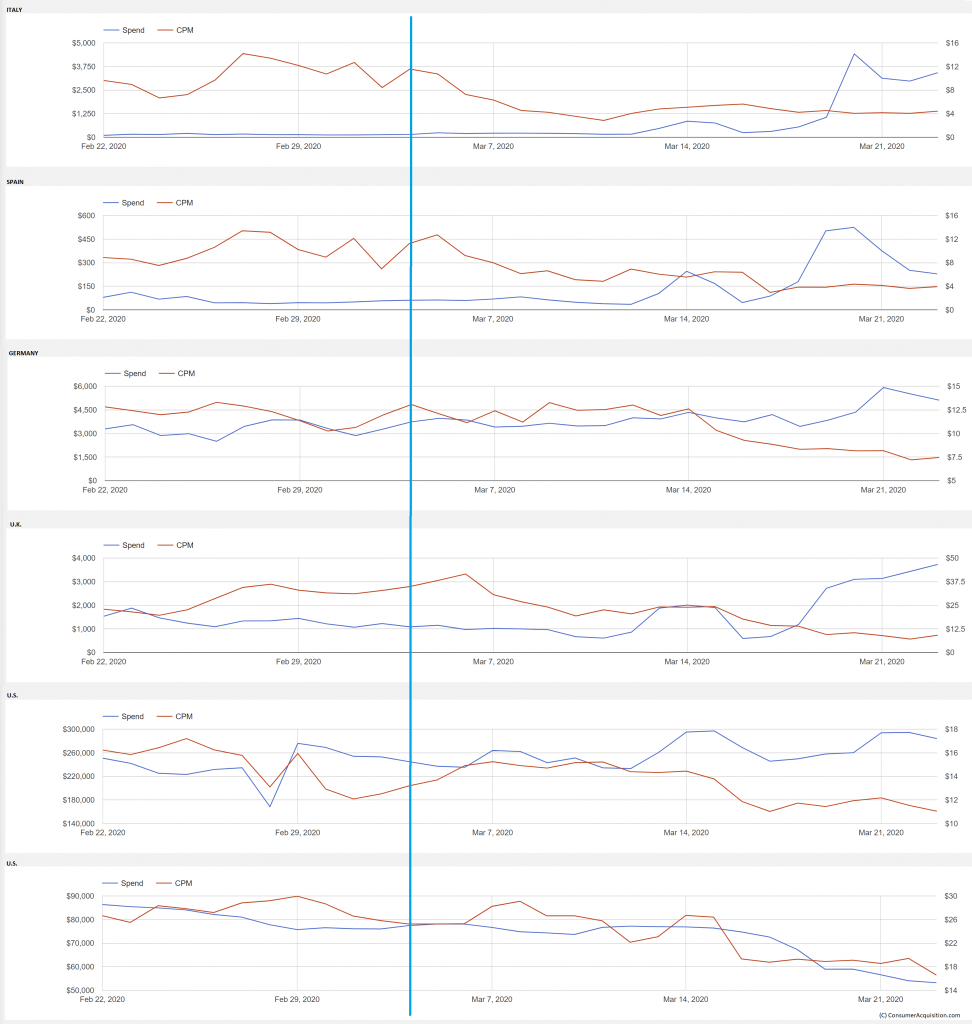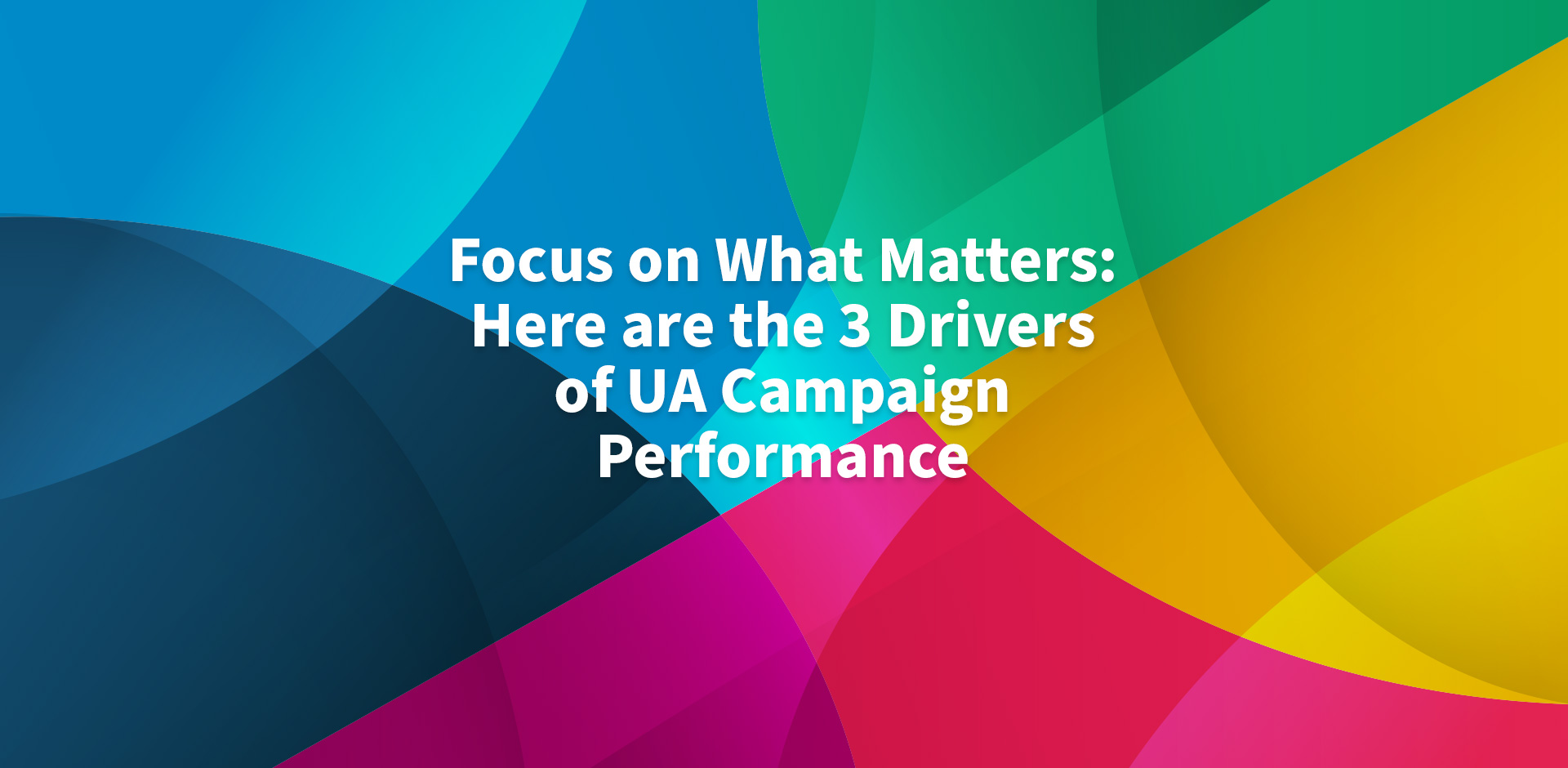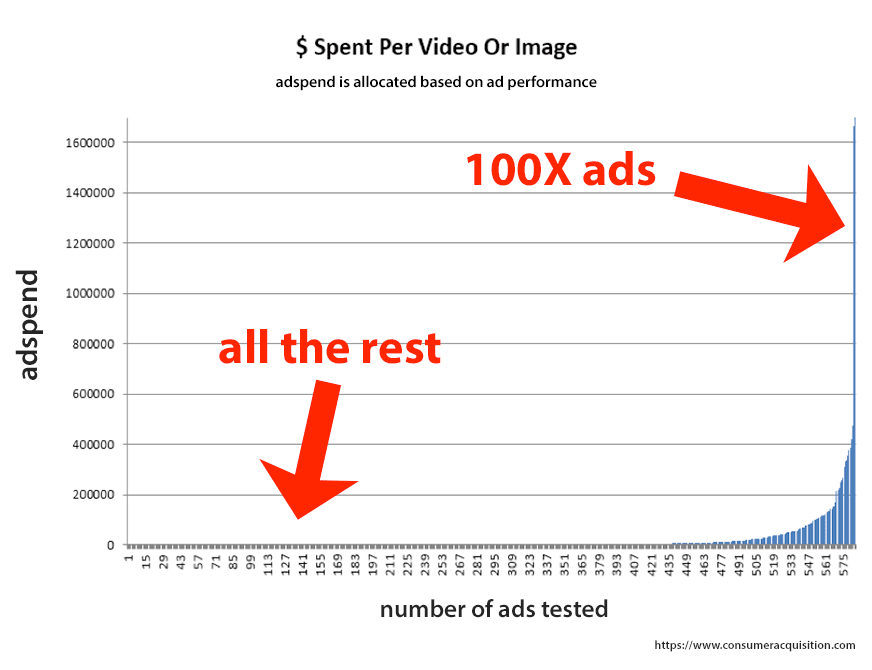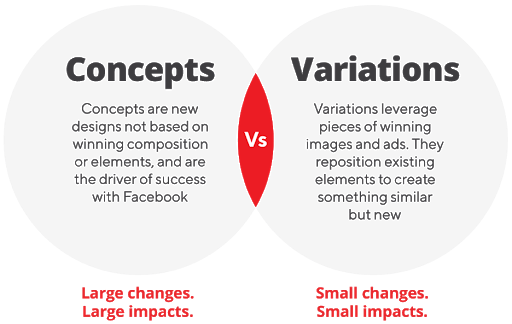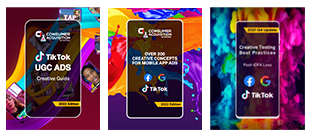Facebook Advertising in 2021 (Instagram and Messenger advertising) is an exciting endeavor. Every quarter, and often every month, there’s some major evolution in the platform.
While the changes are constant, if you understand the fundamentals of how the algorithm works and what Facebook wants for its users, the changes become more understandable. They have context. In this big picture, Facebook is automating much of campaign management through dozens of iterations. Its algorithm is getting smarter all the time.
So when Facebook rolls out things like structure for scale or automated placements, that’s just another example of the platform encouraging advertisers to let the algorithm do data analysis, rather than having human advertisers figure things out themselves.
Same with campaign budget optimization, the concept of “significant edits”, and the simplified account structure Facebook now recommends. Both of those changes are just examples of how the Facebook advertising algorithm can now optimize our campaigns for us.
Facebook’s Goal of Automation
Once you understand this overarching goal of automation, all the “big changes” Facebook rolls out every few months are brought into context.
“Be a giver,” as the saying goes. Create engaging, helpful ads and you’ll probably get better ROAS (return on ad spend). And as you understand all the myriad ways people use Facebook (from Messenger to the Marketplace and via videos and interactive games), all the different ad formats make sense, too.
Creative strategy, especially, makes more sense when you take this larger view. For larger advertisers, especially, well-optimized ads are the difference between success and failure. This is especially true now.
As the algorithm has evolved, any benefits advertisers have gotten from third-party tools or fancy analysis are diminished – the algorithm automates the most advanced features, and better than the tools. So the last best advantage to be had is through creative.
This makes two things essential to success on Facebook right now: Understanding our audiences, and learning how to test creative as efficiently and as effectively as possible. We’ll cover both as we work through the different sections of this guide. The time you’ve finished reading this guide, you’ll have a working understanding of Facebook advertising.
What App Advertisers Need to Do Before They Start Advertising on Facebook
If you’ve been running Facebook (or Instagram) ads for a while, you may already have the basics set up. If so, jump ahead to the next section, Competitive Analysis and Creative Strategy for Facebook Ads.
But if you are among app advertisers just getting started, or you’re launching a brand new account or project, you’ll need to do a few things before you start Facebook advertising. Skipping these steps will either literally block you from launching a campaign, or it will impair your ability to track results.
First, you’ll need to:
1. Create a Facebook advertising account (Assuming you don’t already have one).
2. Create a Facebook advertising business page (Again, assuming you don’t already have a Facebook page for the project you want to advertise).
Boosted Posts
That’s all you’ll need if all you want to do is boost posts from your Facebook advertising page to your existing audience on Facebook. Boosted posts are technically ads, but they don’t have any of the customization features available in Facebook’s Ads Manager. In fact, you’ll need Facebook Ads Manager even if you want to create a post that doesn’t appear on your Page’s timeline or in News Feed.
But boosting posts is simple, which is why so many people do it. Just go to the post you want to boost on your Business page and click the blue “Boost Post” button. Facebook’s interface will guide you through the information required to boost the post. Note that not all posts can be boosted; Facebook’s information page about what can’t be boosted is here.
Promote Your Business
If you’re a local business, you can also promote your business from your Facebook advertising business page. Just click the “Promote” button near the bottom left of your business page, and Facebook’s interface will guide you through all the settings to Promote your business from there.
Use Facebook’s Ad Manager
While boosted posts and business promotion are certainly very easy to use, they are too simplistic for most advertisers, and we generally don’t recommend them. To get far better results from Facebook (and Instagram) ads, you should use Facebook’s Ads Manager. And to do that, you’ll need a Facebook Business page.
Note that you do not need to create an account in Facebook’s Ads Manager. One is automatically created for you when you create a business page.
3. Install the Facebook Pixel
Before you ever turn on an ad campaign, it’s critical to install the Facebook pixel. If possible, it’s actually best for you to install the Facebook pixel even months before you launch your first campaign. This is because the Facebook pixel can track everyone who comes to your website (or to other apps and tools), so it will allow you to target your ads to people who have been to your website ever since you installed the pixel. Being able to create a custom audience of everyone who’s been to your website in the last six months is a beautiful thing.
Fortunately, installing a Facebook pixel is easy. Just go into the Facebook Ads Manager, click the top-left hamburger menu to the left of “Ads Manager.” A pop-up menu will appear. Choose “Ads Manager” from the selections on the left, then look in the third column of the second pop-up menu under “Measure & Report”. Under “Events Manager,” select “Pixels”.
Next, you’ll see a screen like this:
If you click “Set up Pixel”, you’ll be given three options:
Add code using a Partner Integration
Connect your site using one of our many partners including Squarespace, WordPress, Shopify, and others. Learn More
Best for: Sites using a CMS, minimal technical support needed
Manually add pixel code to the website
Follow guided installation instructions with detailed developer documentation. Learn More
Best for: Custom sites, some technical support needed
Email instructions to a developer
If you don’t have direct access to your site’s code, send instructions and documentation to your technical support. Be sure to include the pixel ID in your email.
Best for: No current access to the website codebase
If you’re comfortable working with code (at least enough to copy it and paste it into the right spot), choose “Manually add pixel code to website”. After you select that, Facebook will show you the code you need to add to your website. Note that if you’re using a third-party tool for your Facebook pixel, you would have wanted to pick the first option in the prior screen, “Add code using a Partner Integration.”
Insert Headers and Footers
Once you’ve copied the code, paste it into your website’s header area. If your site is on WordPress, there’s a free plugin called “Insert Headers and Footers” which makes this very easy to do.
Once the code is installed, turn on. There are several benefits to Automatic Advanced Matching, including:
- More accurate conversion attribution
- More people in your Website Custom Audience
- Reduced cost per conversions
Note that you can also set up “manual Advanced Matching,” but you’ll need the help of a developer to do it. is also available for app advertisers if you have Facebook SDK set up. More about SDK in a moment.
Tracking
After you’ve got the Facebook pixel installed and Advanced Matching turned on, then you can tell Facebook specifically what you want to track in the Event Setup Tool. You can also manually edit the pixel code yourself, but the Setup Tool lets you do this without any coding on your part.
Events you might want to track include:
- Leads
- Views
- Orders
Facebook has more information about installing and configuring Facebook pixels here. How you set up your pixel will depend on your business, though the chart below will show you what’s possible for different industries.
4. Optional: Create a Business Manager account.
If you haven’t created a business manager account yet, it’s a good idea to do it now. You can technically still run ads without a Business Manager account, but a Business Manager account will allow you to add:
- People to your account (very helpful if you have even a few employees, or an ad agency or other contractors you work with).
- Pages to your Business Manager.
- Ad accounts to your Business Manager.
For ad agencies and marketing services, in particular, having a Business Manager account is essential. Specifically, agencies and Facebook Marketing Partners (like Consumer Acquisition) can specify which accounts they use on behalf of other businesses. Mobile app advertisers will also want to create a Business Manager account as part of the process of registering their app for mobile app ads.
Business Manager accounts are free and easy to setup. To go to. Click “Create Account” and follow the instructions.
Additional setup tasks for mobile app advertisers
Mobile app advertisers have a couple of extra steps to set up their accounts completely. It is a bit more work, but you’ll be glad you did it.
5. Create [or integrate] a Facebook developer account.
Many advertising and marketing tools require you to set up a Facebook developer account to ad features to your Facebook page or ads. Creating a developer account is free and takes only a few seconds.
- Go to developers.facebook.com.
- Log in with your Facebook account.
- Click on “Create Developer Account”.
And you’re done.
6. Create a Facebook application.
You may also need to create a Facebook application for some third-party tools or to do certain things with your app. Again, this is free to do and takes only a few seconds.
- Go to developers.facebook.com.
- Log in with your Developer account.
- Click on “My Apps” and then on “Add New App”
- Name your new app.
- You’ll be brought into the dashboard where you can begin the integration of your new app.
Settings
After this is done, you’ll want to go to your App Dashboard and go to settings.
In the “Basic” settings area:
- Fill out your app’s Display Name, Namespace, and Domain.
- Enter the URLs to your app’s Privacy Policy and Terms of Service.
- Upload your logo as a 1024×1024 pixel ‘App Icon’
- Choose a category for your app and its “Business Use”.
- Select the Business Manager account you’ll be managing the app ads from.
- Complete the Data Protection Officer contact information form.
- Specify which platforms you’ll be delivering your app on.
Submit App for Review
Finally, submit your app for review, paying close attention to what information Facebook expects you to include in your request.
- Set up the Facebook SDK (Software Developer Kit) with your app and activate App events.
Facebook’s SDK lets you pass app event data from your app to Facebook. This allows you to accurately track and measure the actions people take in your app, and it allows you to use app event data to optimize your Facebook Advertising campaigns in powerful, lucrative ways.
You’ll set up SDK in your App Dashboard (where you just filled out the Basic and Advanced settings). To begin, go to the Settings > Basic page and scroll down to platforms. You’ll be setting up an SDK for each platform your app will use.
Implement SDK
Facebook’s instructions for implementing the SDK on each available platform are here. That page also includes the official Facebook guides for all of Facebook SDKs. Setting up an SDK is a fairly technical task – for example, in iOS, you’ll be using the Swift Package Manager to set up a development environment in Xcode. It’s a job best left to a developer or a mobile app advertising service or agency.
Congratulations. You’ve got the functional elements of Facebook’s advertising platform set up, whether you’re a new advertiser for a local business, or you’re launching a new app to a global market. But it’s still not time to start boosting posts or creating videos. Before you spend a dime on advertising, we recommend you think carefully about your creative strategy.
Competitive Analysis and Creative Strategy for Facebook Advertising
According to Facebook, this is what you need to start creating Facebook ads:
- Your business goal—the reason you’re running the ad
- An understanding of who you want to reach
- A daily or lifetime budget for your ad
- Photos or videos to feature in your ad
Let’s walk through each of these, and talk about the strategy behind them. The decisions you make at this strategic level of your Facebook advertising will make or break the success of your ads. So while this might seem like background work, please: Don’t skip this step. Your smartest competitors won’t.
Why Competitive Analysis and Player Profiles are Worth Your Time
Creating great ads in 2020 requires a blend of data analysis, psychology, and technical skill. But ultimately it all comes down to knowing your audience inside out.
One of the most interesting advertising developments in 2019 was the emergence of “player profiles” – customer profile mockups that define what drives different types of game players to play certain games.
These new customer and player analyses are based on the concept of horizontal segmentation, which has been used in consumer goods for decades. Basically, it’s a way to tailor games, advertising creative, and even product development to specific, high-value market segments, thus generating more revenue and happier players and customers.
We have a detailed that’s worth the read. And while this might seem like extra work for you and your team, we’ve found that most of the top advertisers are already using player profiles in their creative strategy and development. So it’s extra work, sure – but it generates better ROAS.
Competitive Analysis
One other essential best practice for creative strategy is competitive analysis. We’ve written about competitive analysis in detail, but don’t just read about it: Do it.
Even if you only do a competitive analysis for a few hours, and it’s done with just a few screenshots and some links and pasted ad copy in a spreadsheet, that’s enough to make a difference. It will teach you which ads your competitors are running. Analyzed well, that information can also tell you which messaging is working well for your audience and what you should be testing in your own ads.
Competitive analysis probably only second to creative testing on our list of things advertisers should do more of. If you’ve got any spare time, we highly recommend you do more of it.
Setting up your first Facebook advertising campaign
Whew! We’ve done a lot of foundational work so far and now’s the fun part – actually setting up your campaign. Follow along with the screenshots and these instructions. Your ads will be running in no time.
Your business goal—the reason you’re running the ad
Let’s begin with the end in mind: What do you want from your Facebook advertising?
If you aren’t sure about that, or you have a long list of things you want but no one priority, it’s best to get clarity about this until you move forward. Your ads won’t be as effective as they could be until you know what you really want.
This isn’t just a philosophical theory, either. The very first thing the Facebook ad platform will ask you about when you create a campaign is what that campaign’s objective is.
Campaign objectives will vary depending on your business model, obviously. An e-commerce store might want catalog sales, whereas a gaming app could want app installs.
But that’s only the first level of how sophisticated Facebook advertising and campaign objectives can be. For example, some advertisers who want leads may find that their lead generation ads do much better if they’ve warmed up their audience/s with a few reach ads.
Reach Ads
The reach ads can also be used to expand a potential audience; you can show your first video ad to a large audience, see who’s interested enough to watch the first ten seconds of a video, and then show a second more conversion-oriented ad only to the people who watched the first ten seconds of the video. You could even create a lookalike audience of people who watched the video and show more conversion-oriented ads to people like them.
This is, in part, why Facebook ads are so powerful. By blending the different ad objectives, ad types, and the incredibly sophisticated audience targeting capabilities available, advertisers today can do things that advertisers 20 years ago would have been blown away by.
These types of capabilities are also exactly why Facebook has leveled the playing field for advertisers. You don’t need $30,000 worth of third-party ad tech software to do sophisticated audience nurturing and targeting like we just described. It’s all free, right there, on Facebook.
Campaign Objectives
Campaign objectives are particularly important in light of how much control we’ve given over to the algorithm. Picking the right campaign objective is one of the last levers we’ve got to manage our campaigns with, so choose it wisely.
You should also consider picking campaign objectives based on the idea of the customer journey. This is described in detail in Facebook’s “Structure for Scale” best practices – a set of techniques Facebook recommends for all advertisers now. Structure for Scale is basically the new playbook of how to advertise so you maximize the algorithm’s capabilities, rather than stunting its performance.
For more information on Structure for Scale and how to understand it and apply it, see our blog post, Facebook’s Structure for Scale: How to Prepare for Automated Media Buying. We’ve also got a FAQ page on Structure for Scale.
After you’ve chosen a campaign objective, you’ll be asked if you want to use Campaign Budget Optimization or if you want to create a split-test.
Campaign Budget Optimization
No matter which campaign objective you pick, you’ll be asked about split-tests and Campaign Budget Optimization. If you’ve picked an engagement objective, you’ll also be asked whether you want Post engagement, Page likes, or Event responses.
Both we and Facebook recommend you use Campaign Budget Optimization, but if you want to set up a test, it’s done in the setup interface. You can circle back later and turn Campaign Budget Optimization on in the campaign’s settings after you’ve published it.
Testing
Returning to testing, if you choose split-test in the setup interface, you can pick one of four options:
Note that you can test almost anything within a campaign by creating more than one ad set within the campaign and then changing just one thing, or “variable” (the A/B/C of the a/b test) across each ad set.
Incidentally, this is how Facebook automatically sets up a/b tests:
Testing Ad Creative
If you’re testing ad creative, it is also possible to put several different ad creatives within one ad set. This is common practice, and it can work well, but be aware that creating a large number of ad sets is not Facebook’s recommended best practice right now, especially if you want your campaigns to scale.
Per the “Structure for Scale” best practices we mentioned earlier, Facebook recommends a simplified campaign structure like this:
Rather than using many ad sets in a campaign, like this:
So what do you do?
Follow Facebook’s Simplified Campaign Structure to the letter, or just ignore it and create dozens of ad sets for the testing you know is so critical.
Actually, you compromise. This works out best because it’s not usually a good idea to try to test everything all at once. Just as “Rome wasn’t built in a day,” high-performance ad campaigns aren’t built in a day, either (though there are a few shortcuts you can take).
So do create enough ad sets to test creative, but not too many. Seven would be the maximum, and four would probably be better.
Just be patient!
In our experience, advertisers have to test about 20 new pieces of ad creative before they identify a new “control” or top-performing ad. We’ve built a rigorous, high-performance ad testing methodology over the course of the last few years. If you want to know more about our advanced creative testing techniques for high-volume Facebook advertising accounts, start with our blog post, 5 Facebook Best Practices For A|B Testing New Ad Creative, then read the section Hidden Challenges in Creative Testing of our whitepaper, 2020 Definitive Guide of Facebook Ads.
We believe creative strategy and testing is the single best way to achieve success with Facebook advertising (or with any type of social advertising). After profitably managing over $1.5 billion worth of social media ad spend, if we could give only one piece of advice, it would be this: Test. Test again. Test more.
An understanding of who you want to reach: Setting up Facebook Advertising Audiences
So now you know what you want from your ads; what action you want people to take. Now let’s get specific about who you want to take that action – who your audience is. Who you pick for your audience (or, who Facebook picks for you) is arguably as important as your ads.
Because of the way the algorithm works now when you set an objective for your campaign, you’re already picking your audience, at least in part. This is because the algorithm will take your defined audiences and then go find people within those audiences who are most likely to complete the objectives you want. In other words, Facebook will show your ads to the people who are most likely to take action – to complete the objective you’ve defined – first.
So logically enough, the very next screen you’ll see when you set up a new campaign and decide about testing… is the audience settings.
Audience Selection
Audience selection, like ad creation, is an art and a science unto itself. But if you’ve never run a Facebook ad before, and you don’t have a list or customer file, here’s where to start:
- Pick a demographic profile that’s well-defined but not too specific.
- In the “Detailed Targeting” section, search for some of your larger competitors. Add one major competitor for each audience, using the same demographic profiles.
Audience Testing
This is your first test of audiences. Pick 3-5 competitors that are large enough so you can target their audiences and use the demographic profile you’ve selected. Most Facebook experts recommend a minimum “potential reach” for each audience of 1-2 million people. Create those 3-5 audiences so the only difference between them is your competitor. The demographics, geographic targeting, and even your ad creative should all be the same across each ad set.
From there, use the reporting within your Facebook Ads Manager to show you which placements, demographics, and other variables might be worth additional tests. And remember ONLY TEST ONE THING AT A TIME. Otherwise, you won’t know what’s actually driving results. Facebook’s testing platform has some quirks, so the cleaner your testing methodology is, the better.
If you do have a customer file with email addresses or an email subscriber list, upload that and use it as a Custom Audience or as the basis for a Lookalike Audience.
To do this, go to Business Manager > Audiences. Click the blue-button in the top left and select “Custom Audience”.
Create a Custom Audience
You’ll see a pop-up screen like this:
Clearly, there’s a lot to choose from! Now you’re starting to see how powerful audiences and audience selection is… and why you want to proceed carefully as you test new audiences. It’s great to have so many choices, but that can make for disorganized testing.
If you wanted to advertise a gaming app, you’d have several options here: The “App activity” option might be the most interesting. Also, if you’ve set up SDK, you could advertise to, say, only people who had installed your app, or only people who have completed a purchase event. In addition, if your advertising budget was limited, even severely limited, you could still grow your user base if you only advertised to super-high value people.
Custom Audiences
Also, note that we’re looking at Custom Audiences here. You can always create a “Lookalike Audience” from any Custom Audience, and you can also segment these audiences out in very strategic ways.
We do so much audience targeting and selection that we’ve actually built a tool that lets advertisers create potentially hundreds of super-defined audiences with just a few clicks. We can even target people based on their expected lifetime value, and we can adjust those lifetime values in such a way that we can direct the algorithm to go find us, super-high-value users.
This level of audience targeting and audience fatigue management gives us a lot of control. It also lets us extend the life of creative assets, and it lets us squeeze every dime of performance out of ad budgets. See how we do it.
After you’ve picked an audience, Facebook will ask you where you want your ads to show. Per Facebook’s Structure for Scale best practices, we recommend choosing “Automatic Placements”. This will let the algorithm pick from more than ten possible places where your ads will show. And as the algorithm knows more about what works or doesn’t work, and it has a far better able to analyze the data available, it’s best to just let it pick where your ads will show.
Delivery Optimization
The next thing you’ll have to decide is delivery optimization. Do you want your ads to be charged by:
- Link clicks (you are charged every time someone clicks the link in your ads)
- Impressions (By CPM, or “clicks per thousand views”. In other words, you are charged based on how many of thousands of people see your ads)
- Post Engagement (Choose from likes, shares, or comments)
- Daily unique reach (you are charged based on how many people see your ad once per day)
This is also where you can decide if you want to run your ads on a schedule. For instance, if your reporting shows that your ROAS (return on ad spend) is terrible after 9 pm and before 6 am, you might want to schedule your ads so they don’t show between those times.
Delivery Type
Finally, you can choose the delivery type: Accelerated or Standard. Standard spreads out how often your ads show across the day. Accelerated spends your ad budget as soon as possible.
So by now, we’ve got an objective for our ads, and we know who we want to show those ads to. Next up is how much we want to spend.
A daily or lifetime budget for your ad
The best advice here is the same advice we’ve given before: Give the algorithm what it needs to do its job. That means bidding high enough and allocating enough budget.
And now, finally, we can get to the ads themselves.
Setting your ads up for success
There are five areas of ad setup:
- Identity
- Format
- Media
- Links
- Tracking
Identity is straightforward. Just tell Facebook which page you want to be associated with your ads. If you’re running ads on Instagram, you’ll also need to assign an Instagram page.
Format
The format is where things get interesting. You can choose from a single image ad, video ad, a slideshow ad or an “Instant Experience” ad (which used to be called “Canvas”). Instant Experience ads are for mobile devices only and used the least. They typically require considerable creative development, but for the right brands, they can work well.
Image Ads
Single image ads are the bread and butter of Facebook advertising creative. They can work extremely well and – depending on your audience and your objectives – it’s possible they could even outperform a video ad.
Here’s an example of a simple image ad:
Video Ads
Nice, right? But for our money, video ads beat every other ad type. We’ve created tens of thousands of video ads, and we have quite a lot to say about best practices for video ad creative development and testing.
If you wish you could do video ads but you don’t have the resources to make videos, there is a clever shortcut: Adding motion to still images.
Carousel Ads
You can also create “Carousel ads” that are like a slideshow of static images. Here’s a screenshot of a carousel ad. These can work well for lead generation ads or for e-commerce sites.
Add Media
Once you’ve chosen the ad format, you’ll add your media, which will be either an image or a video. The specifications for images are here. The specs for videos are here.
Media Upload
When you upload your media, make sure you include multiple aspect ratios so your ads look good on all the different placements.
Media Review
Once you’ve uploaded your media, you’ll be given another chance to review how it will look in different placements, and to make any edits as necessary.
Ad Copy
Then you’ll set up your ad copy. Use the icons in the center of the panel to view your ad copy across all the placement settings. You may have to adjust your copy quite a lot so it makes sense in every placement.
Conversion Tracking
Next, you’ll have the option to turn on conversion tracking (which you’ll do, of course). For app advertisers, they’ll want to turn on App Events as well.
That will conclude the setup for your first ad. Continue this for each ad you want to test. When you’ve gotten through all the ads, click the green “Confirm” button to finalize your new campaign. This will submit it for review, which shouldn’t take much more than a few hours.
Congratulations. You’ve launched your first Facebook Advertising campaign!
Check the performance of your ads in the Ad Manager, or, if you want, through third-party reporting tools. And no matter what, keep testing your ad creative. We’re available if you need help with creative strategy and development, or if you want to outsource the whole process.


